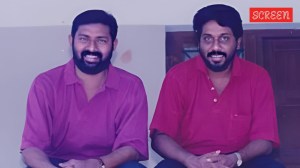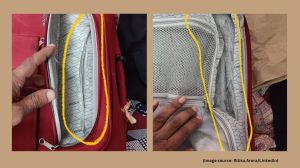‘Looking through the thread of time in artist Sumakshi Singh’s internationally acclaimed ‘Monuments’
In her nearly three-decade long career, Singh has worked in various mediums, including drawing, sculpture and painting.
 Feature image: 'Monuments' (2025) exhibited at Bikaner House, Delhi (source: file)
Feature image: 'Monuments' (2025) exhibited at Bikaner House, Delhi (source: file)Walking around Sumakshi Singh’s ‘Monuments’ (2025) is like walking in an ethereal garden. As the delicate column-like sheets – bearing recreated embroidered patterns from the minarets in Delhi’s Qutub complex – hang from the ceiling of a gallery, the white cube transforms into a fantastical space from another time, another land. Singh wanted to create a continuum of sorts between the past and the present when she first decided to build on the idea that has its genesis in the fundamental question: ‘What is it that endures in a world that’s shaped by transience?’
The quest for the answer led the Delhi-based artist to monuments; the Qutub Minar in particular. “The question of what is worth holding on to in our stories, beliefs and identities always comes up. There’s something very human about searching for a sense of permanence or continuity in this world that’s designed not to give it to us,” she says. And, ‘Monuments’ (2025), exhibited recently at Delhi’s Bikaner House, has been a means for Singh to find that sense of belonging. A 2024 edition of the artwork earlier this year won her the Special Mention at this year’s Loewe Craft Prize, the first Indian artist to have bagged the honour.
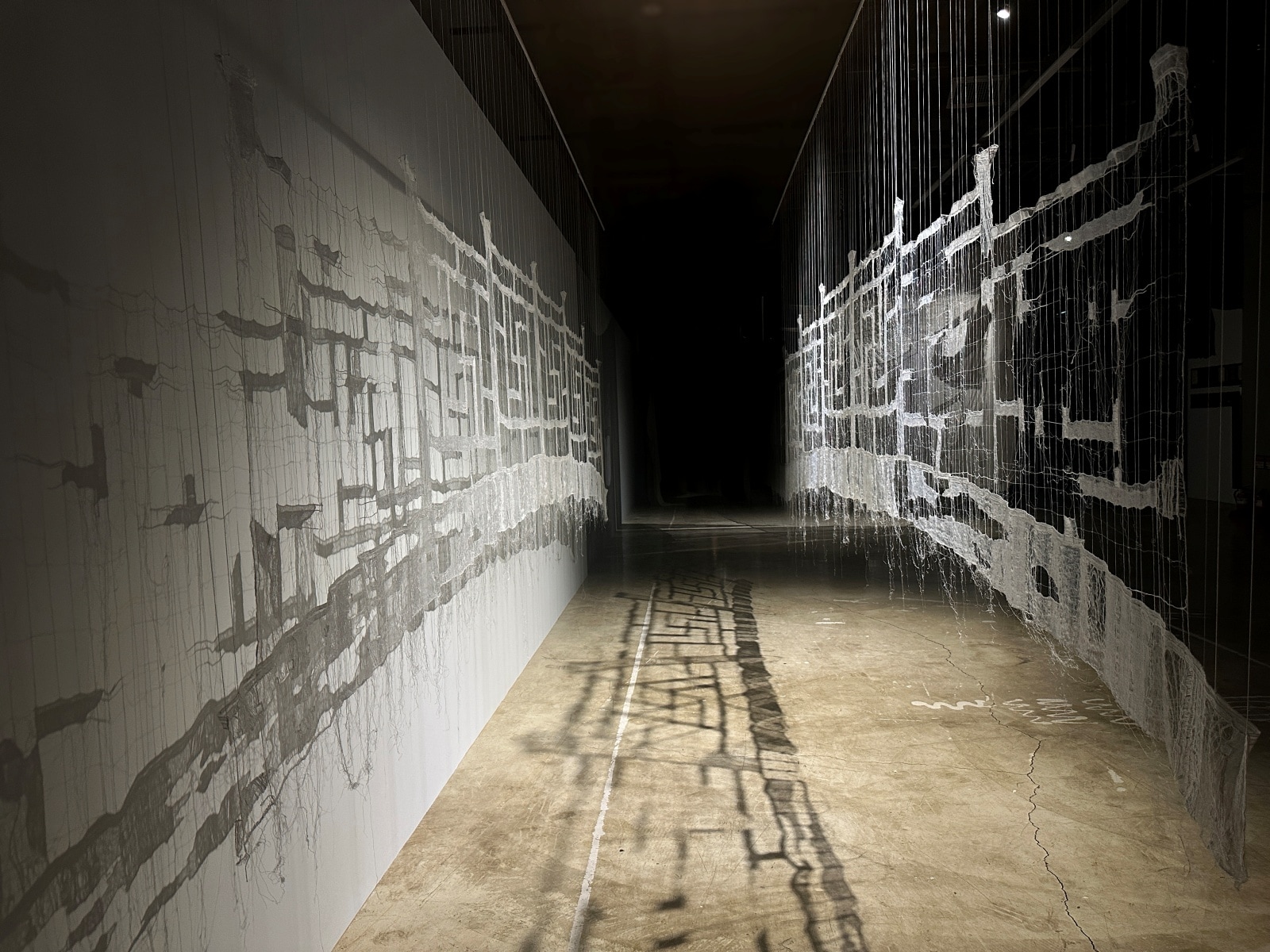 ‘Spanning the Void’ exhibited at the ongoing Cheongju Craft Biennale (source: file)
‘Spanning the Void’ exhibited at the ongoing Cheongju Craft Biennale (source: file)
“For me, a monument is a collective desire to resist oblivion. It endures and allows the voice or ideology of its creator to continue long past the death of its creator. In that sense, a monument is porous. Parts of the images start to get erased and it has these eroded histories,” says the artist who has grown up all over the country, thanks to her father’s transferable job.
What lends the piece its spectral quality is Singh’s unique technique which has its roots in the memory of her mother. “She had an accomplished embroidery practice and was known for creating these magical gardens in all the houses we have lived in. So much so that when it was time for us to leave, there’d always be a queue of people wanting to move into that house because of her gardens,” Singh recalls.
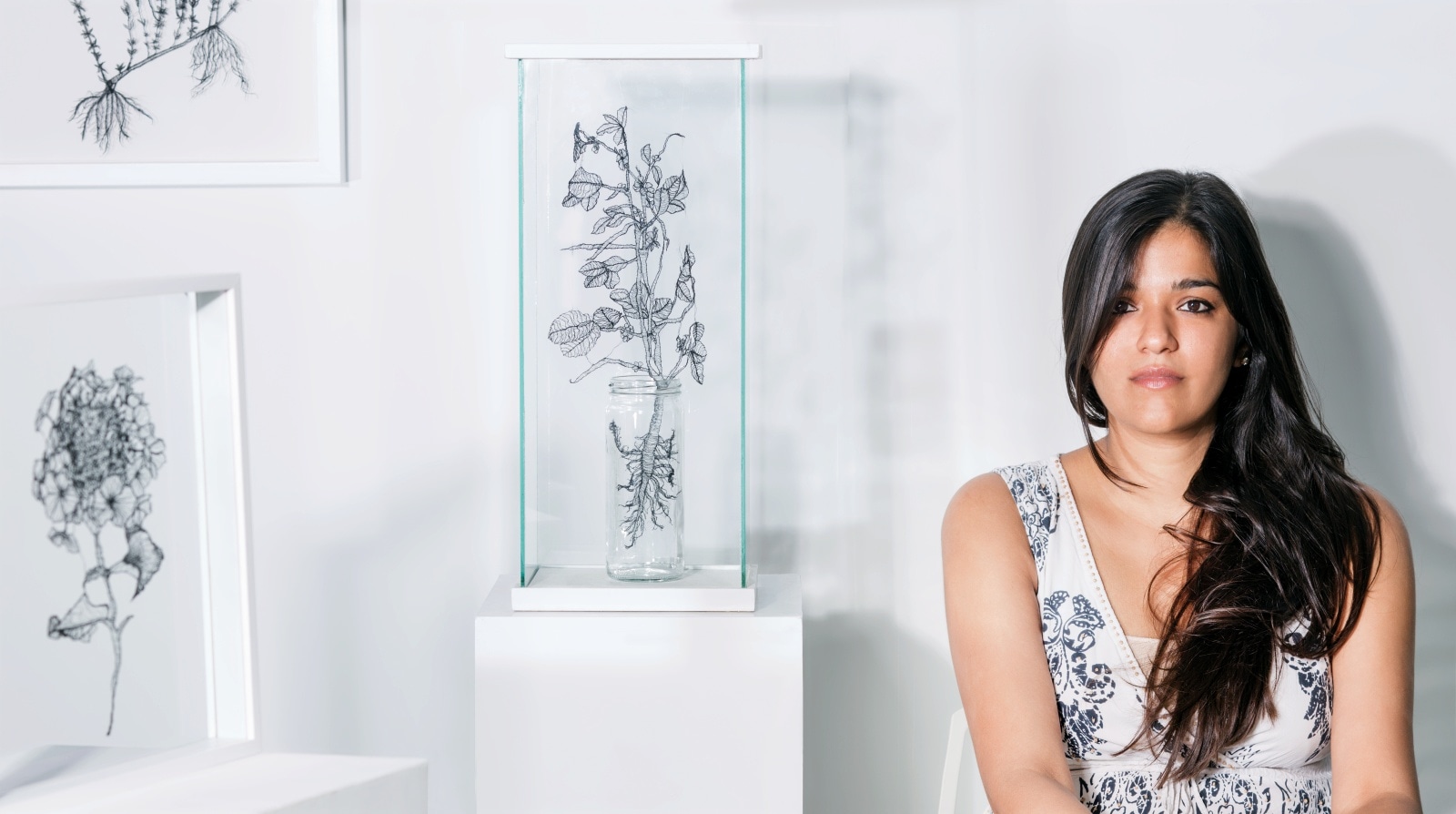 Sumakshi Singh in frame (source: file)
Sumakshi Singh in frame (source: file)
The magic and delicacy of her mother’s gardens and embroideries have over the years come together in Singh’s surreal works, including ‘Monuments’. “After my mother passed away in 2013, I found myself using thread as a way to reconnect with her. I found the letters she had written to me when I was living in Chicago and started to trace out the words and embroider them. It seemed I wanted to tie her words down so they couldn’t be erased. Ironically, after I embroidered the text from one letter, the words seemed to protest being stuck,” Singh recalls, adding, “So I re-embroidered them on a more transparent fabric, which felt a little better, but wasn’t enough. Then I started cutting out bits of the fabric around it, but that felt clumsy. At this point, the person who used to work with my mother on her embroidery, and has also worked with me on several projects, suggested I try a soluble fabric, usually used in the industry to lend stability during needlework.”
She eventually embroidered her mother’s words with thread – copper, silk, nylon – on the soluble fabric, and as dissolved the base away. Soon she was left with the words levitating in space. “That felt just right,” says Singh, who went on to use the technique to recreate her mother’s gardens and then ‘Monuments’.
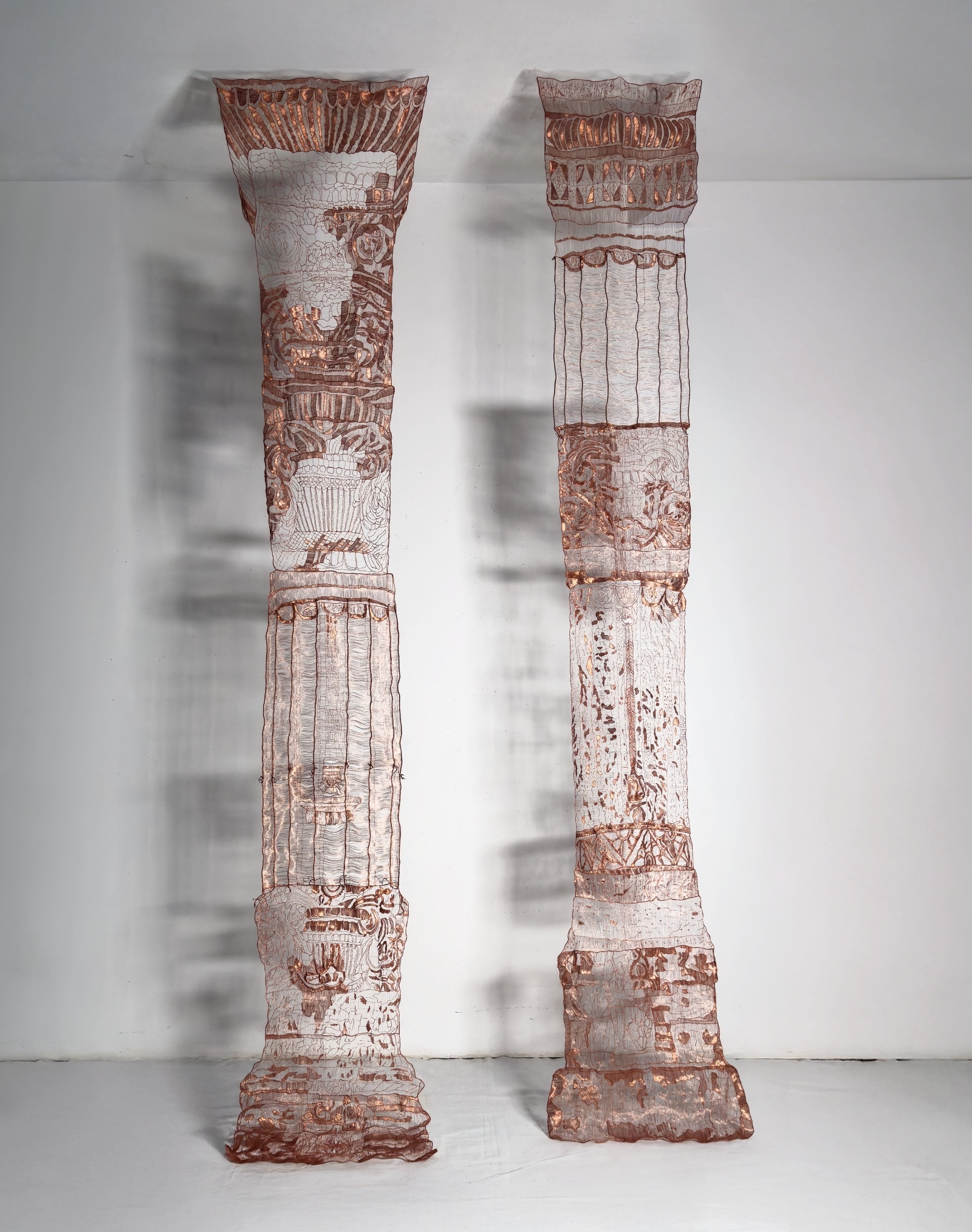 ‘Monument’ (2024) won the Special Mention at this year’s Loewe Craft Prize (source: file)
‘Monument’ (2024) won the Special Mention at this year’s Loewe Craft Prize (source: file)
In her nearly three-decade long career, Singh has worked in various mediums, including drawing, sculpture and painting. Her threadwork however stands out in its uniqueness of concept and how it blurs the lines separating the realms of art, craft, architecture and fashion, although she did not devise her practice with that intention. “I don’t think in boxes,” says the 45-year-old artist who believes she is driven by her “unitive and syllogistic” right brain. “I just work with the flow. It is only after the work is made that one looks at it through the lens of architecture or fashion or something else.”
A large part of Singh’s practice has been shaped by her nomadic life. Delhi has been base, but she has lived in Bombay, Hyderabad, Madras, Rishra (West Bengal), Gumia (Jharkhand), Kanpur, Baroda, Chicago (where she got her MFA and later taught at The School of the Art Institute of Chicago), France and Italy. In all these places and everywhere in between, monuments left a mark on her. Even as she takes on new projects – Singh recently collaborated with master Sanjhi artist Mohan Varma for a showcase of the 16th century paper cutting tradition; her work ‘Spanning the Void’ based on a temple bridge near Cheongju (South Korea) is part of the ongoing Cheongju Craft Biennale – she hopes to keep returning to ‘Monuments’ and turn it into a series. “I’m quite fascinated by Hampi. There are a lot of different monuments all over the country and the world, but the Qutub was just right in my face. I had to start with it,” she says.




- 0115 hours ago
- 0215 hours ago
- 0315 hours ago
- 0415 hours ago
- 0516 hours ago










